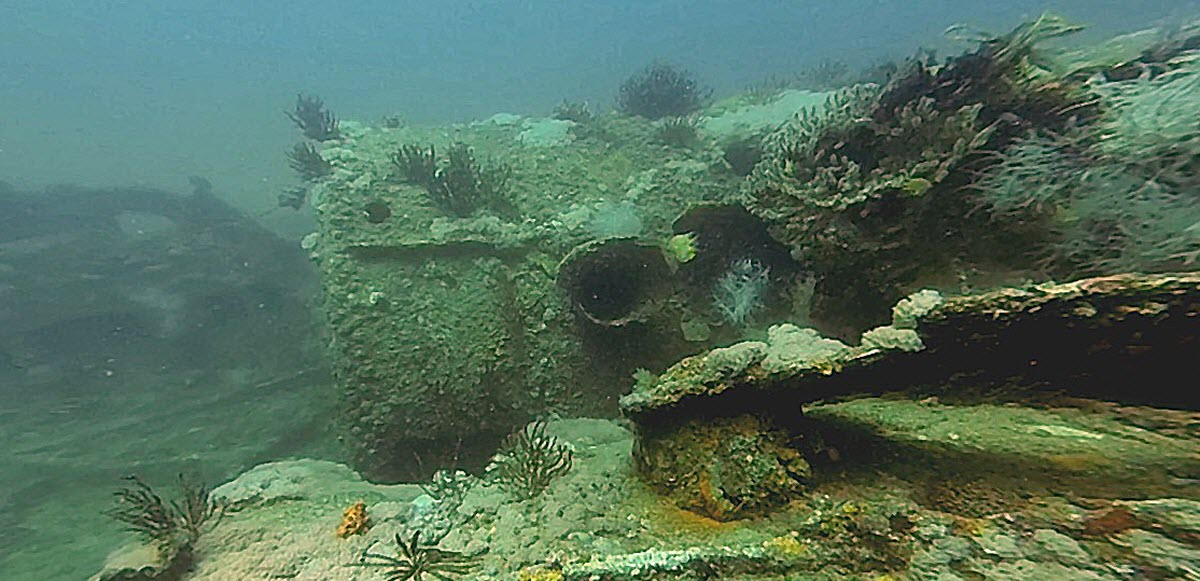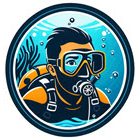The Philippines, an archipelagic gem in Southeast Asia, is renowned for extraordinary wreck diving opportunities that promise a blend of underwater natural beauty and naval history. In this article, I hope to share my excitement for wreck diving in the Philippines.
Diving enthusiasts around the world share an affinity for the spectacular beauty hidden beneath the surface of our water-dominant planet. Among numerous diving varieties, wreck diving stands out for the historical treasure that it promises: sunken shipwreeds cloaked in mystery and teeming with marine life.
The Philippines boasts over 7,000 islands, presenting a vast playground for adventure seekers. With an intricate history bearing the scars of World War II and a strategic location for sea trading routes, a myriad of wrecks lies beneath its mysterious sea expanse, making it, quite literally, a submerged museum. Wreck diving in the Philippines opens a window into historical narratives etched deep beneath the sea bed, surrounded by vibrant coral ecosystems and marine biodiversity. Armed with adequate training, respect for the ocean, and a sense of adventure, divers can seamlessly navigate these veritable time capsules from a bygone era. Each wreck carries a unique story waiting to be discovered, making wreck diving in the Philippines an unbeatable experience for history buffs and marine enthusiasts alike.

Some of my favourite wreck diving sites in the Philippines
Subic Bay
One of the most popular wreck diving areas in the Philippines is Subic Bay, home to various sunken warships and freighters. This former U.S. Navy base has an array of U.S. and Japanese wrecks from World War II, such as the El Capitan (USS Majaba), a merchant marine freighter, and the Landing Ship Tank (LST). These sites are a bustling hub of micro-fauna, including Pygmy seahorses, nudibranchs, and crinoid squat lobsters, making it a hotspot for photographers.
In addition to ship wrecks, Subic Bay also has several airplane wrecks, including the L2D “Tabby” (Japanese DC-3) airplane, a Vietnam era F4 Phantom, and a Douglas A-1 Skyraider.
Wrecks can remain relatively unharmed in Subic Bay, since they are somewhat protected from at least some of the very harsh weathers that regularly hit the Philippines. Another bonus with Subic Bay is its shallowness; most of the wrecks here can be reached by ordinary hobby divers without any special deep-dive training.
The San Quentin Wreck in Subic Bay
The Spanish Gun Boat “San Quentin” is one of the oldest wrecks in the Philippines. It was scuttled in 1898 to block the U.S. Navy from accessing the bay, and is now resting in 12-16 meters of water at the eastern entrance of the bay (southeast of Isla Chiquita and Isla Grande).
The visibility is almost always good here, and the shallow water permits a lot of sunlight to penetrate down to the wreck.
The bow, boilers and stern (including the rudder section) are fairly well preserved, while the rest of the hull is sprawled out and now resembles a “ship skeleton”.
A lot of marine life live on and around San Quentin, including nudibranchs, stingrays, cuttlefish, and eels.
Coron Bay, Palawan
Hailed as one of the top wreck diving spots worldwide, Coron Bay in Palawan has an impressive Japanese shipwreck site from WWII. Vessels like Irako, Okikawa Maru, Akitsushima, and several others offer dramatic exploration opportunities for divers, with the added bonus of extraordinary visibility often up to 15-20 meters. These sprawling ship skeletons are renowned for their growth of vibrant soft and hard corals, a thriving ecosystem housing diverse marine life, such as groupers, batfish, lionfish, and often visiting tuna.
Coron Bay is located between the islands Coron and Busanga in the Calamian Islands, and most of the bay falls within the Coron Island Protected Area. This is a traditional fishing area for the indigenous Tagbanwa people.
The most popular spot in Coron Bay for divers is found roughly one hour from the shore by dive boat. On September 24, 1944, the ships Akitsushima, Okikawa Maru, Irako, Kogyo Maru, Olympia Maru, Taiei Maru, Kyokuzan Maru, the East Tangat Gunboat, and the Lusong Island Gunboat were sunk here by the third air fleet of the U.S. Task Force 38.
- The Lusong Island Gunboat partially breaks through the water surface and has become a popular destination for snorklers.
- Scuba divers who wish to stay at a shallow dept can visit the East Tangatr Gunboat, where the dept range is 5-20 metres.
- All the other wrecks at this site are found within the 20-45 metres range.
- For divers who wish to explore some of the larger wrecks deep down, using nitrox is common to reduce the need for long decompression stops.
Puerto Galera
While most famous for its biodiversity, Puerto Galera also attracts wreck divers to the Sabang Wrecks, three different vessels sunk purposely for diving and snorkeling purposes. The wrecks are shallow enough for beginners, brimming with marine life like batfish, snappers, sweetlips, boxfish, and various critters.
Safety Measures for Wreck Diving
Despite the allure of wreck diving, it’s crucial to be aware that this form of diving comes with many potential hazards, including sharp metal edges, silt-out conditions, entrapment, entanglement, and limited light. Therefore, specific safety measures are essential.
I recommend having at least an Advanced Open Water certification before pursuing wreck diving. Specialized wreck diving courses provide comprehensive training in terms of wreck navigation, line-laying, and safety procedures for entering wreck interiors.
Considering the safety hazards, it is not advisable to dive alone. Dive with a dive buddy that is also knowledgable in wreck diving and know how to respond to an emergency. A working knowledge of local currents and specific safety issues, including decompression stops and gas supply, is also critical.
All wreck divers should ensure they are equipped with suitable safety tools for the site and the conditions, such as finger spool, dive knife, and a good torch. Check all equipment prior to the dive.
For some wrecks and dive sites, going with a local dive guide who has plenty of experience from this particular site and wreck is strongly recommended. This is not just a safety feature; it can also help provide you with a much better diving experience.
